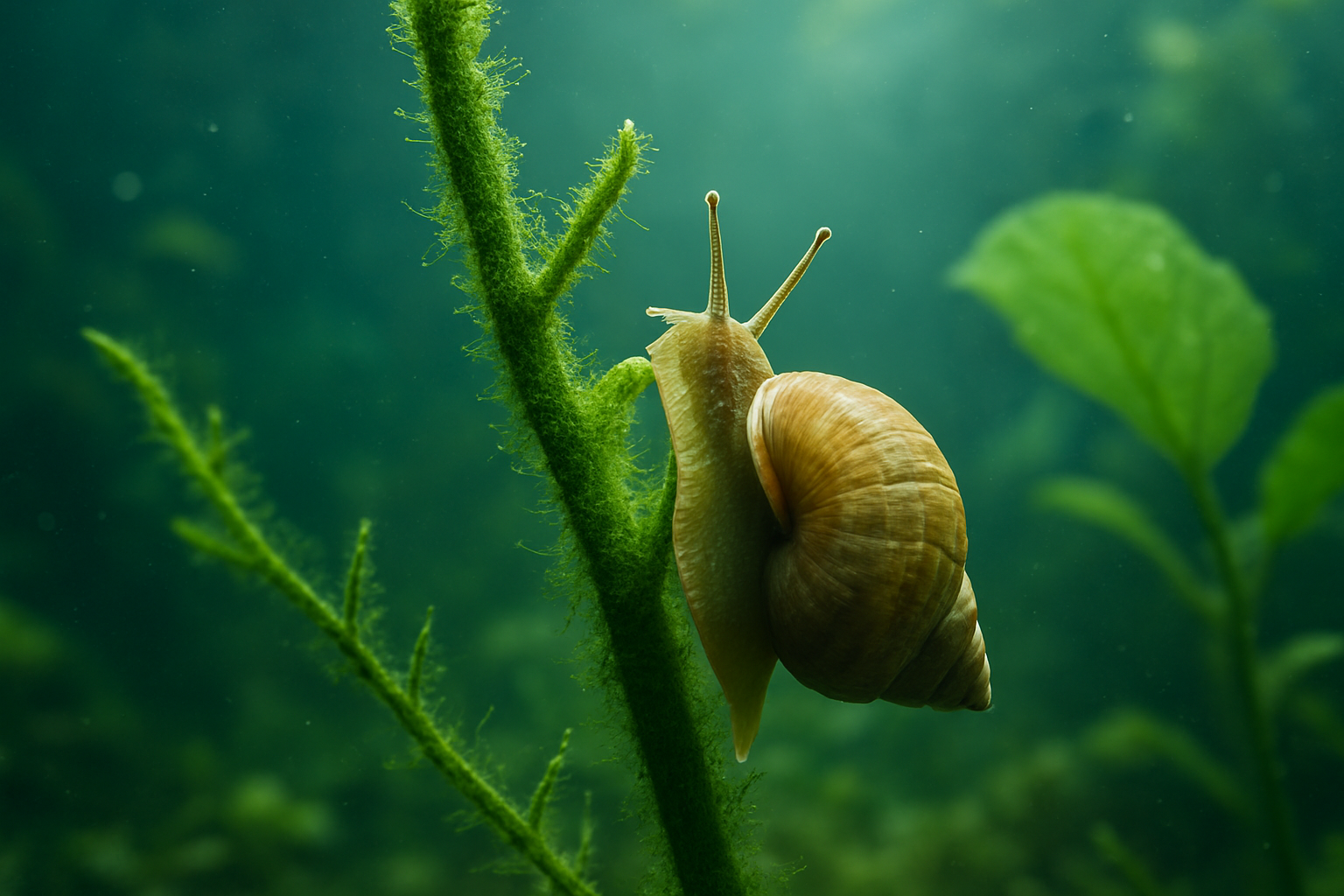Unveiling the Secret World of Aquatic Snails: Nature's Underwater Gardeners
Dive into the fascinating realm of aquatic snails, the unsung heroes of freshwater ecosystems. These tiny mollusks play a crucial role in maintaining the delicate balance of underwater environments, yet their incredible abilities and complex behaviors often go unnoticed. From their unique reproductive strategies to their surprising intelligence, aquatic snails are far more than just silent inhabitants of our lakes, rivers, and aquariums.

The Evolutionary Journey of Aquatic Snails
Aquatic snails have a rich evolutionary history dating back over 500 million years. These ancient mollusks first emerged in marine environments during the Cambrian period, gradually adapting to freshwater habitats over millions of years. This transition required significant physiological changes, including the development of specialized organs to regulate water and salt balance in their new freshwater homes.
Today, there are over 4,000 known species of freshwater snails, each uniquely adapted to its specific environment. From the tiny ramshorn snails barely visible to the naked eye to the impressive apple snails that can reach the size of a tennis ball, aquatic snails showcase an incredible diversity of forms and functions.
The Ecological Importance of Aquatic Snails
Aquatic snails serve as nature’s cleaning crew in freshwater ecosystems. Their primary role is that of algae eaters and detritus feeders, helping to maintain water quality by consuming excess plant matter and organic debris. This feeding behavior helps prevent algal blooms and keeps water clear, benefiting other aquatic life forms.
Moreover, snails play a crucial part in nutrient cycling within aquatic ecosystems. As they consume organic matter, they break it down and excrete nutrient-rich waste that becomes available to other organisms. This process helps distribute essential nutrients throughout the water column, supporting the growth of aquatic plants and microorganisms.
Unique Adaptations and Behaviors
Aquatic snails have developed fascinating adaptations to thrive in their underwater world. One of the most intriguing is their ability to breathe both in and out of water. Many species possess a modified lung called a pulmonary sac, which allows them to take in oxygen from the air when they surface. Additionally, some species have developed gills to extract oxygen directly from the water, enabling them to stay submerged for extended periods.
Another remarkable adaptation is their method of locomotion. Aquatic snails use a muscular foot to glide along surfaces, secreting a thin layer of mucus that aids in movement and adhesion. This mucus trail also serves as a form of communication, allowing snails to leave chemical signals for other members of their species.
Reproduction and Life Cycle
The reproductive strategies of aquatic snails are as diverse as the species themselves. Many freshwater snails are hermaphrodites, possessing both male and female reproductive organs. This adaptation increases their chances of successful reproduction, especially in environments with low population densities.
Some species engage in a fascinating courtship ritual known as love darts. During mating, snails shoot calcareous darts at their partners, which are thought to increase the chances of successful fertilization. After mating, snails lay eggs in gelatinous masses attached to aquatic plants or other surfaces.
The life cycle of aquatic snails varies greatly between species, with some living only a few months while others can survive for several years. Factors such as water temperature, food availability, and predation pressure all influence their lifespan and reproductive success.
Intelligence and Sensory Abilities
Contrary to popular belief, aquatic snails possess a surprising level of intelligence and sensory awareness. Recent studies have shown that some species can learn from experience and even display basic problem-solving skills. For example, certain snails have demonstrated the ability to navigate simple mazes and remember the location of food sources.
Snails rely heavily on their sense of smell and touch to navigate their environment and locate food. They possess specialized tentacles equipped with chemoreceptors that allow them to detect chemical signals in the water. Some species even have rudimentary eyes capable of distinguishing between light and dark, helping them avoid predators and find suitable habitats.
Conservation Challenges and Future Prospects
Despite their ecological importance, many species of aquatic snails face significant threats. Habitat destruction, pollution, and the introduction of invasive species have led to declining populations of native snails in many freshwater ecosystems. Climate change also poses a serious challenge, as rising water temperatures and altered pH levels can negatively impact snail reproduction and survival.
Conservation efforts are underway to protect vulnerable snail species and their habitats. These initiatives include habitat restoration, captive breeding programs, and public education campaigns to raise awareness about the importance of these often-overlooked creatures.
The future of aquatic snail research holds exciting possibilities. Scientists are exploring the potential use of snail mucus in medical applications, such as wound healing and drug delivery. Additionally, ongoing studies into snail behavior and ecology continue to reveal new insights into these fascinating creatures, highlighting their importance in maintaining healthy aquatic ecosystems.
As we delve deeper into the secret world of aquatic snails, it becomes clear that these small but mighty mollusks are far more than just silent inhabitants of our waterways. They are essential components of freshwater ecosystems, playing vital roles in maintaining water quality, nutrient cycling, and biodiversity. By recognizing and protecting these underwater gardeners, we can ensure the health and balance of our precious freshwater resources for generations to come.





